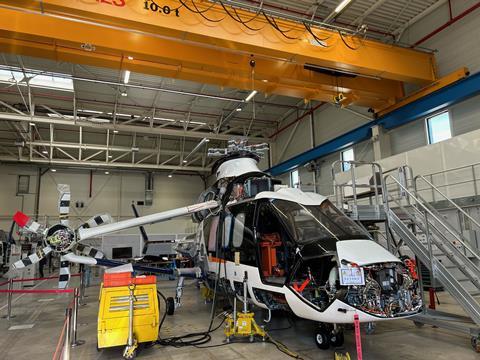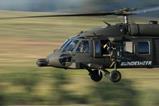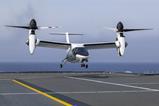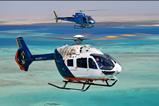Airbus Helicopters is increasingly confident that its Racer technology demonstrator will be airborne in the coming weeks, with assembly of the high-speed rotorcraft now largely complete.
Part funded by the EU’s Clean Sky 2 programme, work on the Racer – a compound rotorcraft building on the previous X3 demonstrator – has been under way since 2017 with a first flight originally scheduled for 2021.

However, development delays and the disruption of Covid-19 pushed that date back, with the airframer most recently hoping a maiden sortie could be performed late last year.
Although a flight by that date failed to materialise, Airbus Helicopters says it is now closing in on the milestone.
Final quality inspections on the completed aircraft and its subsystems are currently taking place at the manufacturer’s facility in Marignane in southern France as it targets a first flight “in the coming weeks”, says Racer programme manager Julien Guitton, briefing journalists on 13 February.
Once those checks are completed, the Racer will be moved to the flight line for the ground runs and pre-flight calibration essential to obtaining a permit to fly; that activity is expected to last for around two weeks.
“Then it will be the first flight,” says Guitton. “Our target is the end of March.”
When airborne, Airbus Helicopters will progressively open the Racer’s envelope, targeting to reach its maximum cruise speed of 220kt (407km/h) within around six months.
Guitton foresees a flight-test programme of around two years, during which it will accumulate around 200h with the demonstrator.
That will include trials of the “eco-mode” function on the Racer’s Safran Helicopter Engines Aneto-1X powerplants, which should cut fuel consumption by around 15%.
Those tests, which see one of the two engines idled during cruise, will come as a second step following a “lay-up” to install the eco-mode-enabled engine and supporting equipment, says Brice Makinadjian, Racer chief engineer.
Although that process should not be a lengthy one, it is “quite intrusive”, he adds. A critical design review for the system is currently under way, he adds.
Even though the Racer is yet to fly, Airbus Helicopters is already eyeing a possible future beyond the technology demonstrator phase: “We want to go further by also doing concrete demonstrations of civil and parapublic missions,” says Guitton.
Airbus Helicopters has built the Racer with future commercial applications in mind, he notes: “The configuration is closer to something we could certify in the future with reduced effort.”
Military applications of the Racer’s architecture – which features a distinctive V-wing shape and twin pusher propellers – are also being contemplated through the Airbus Helicopters-led European Next Generation Rotorcraft Technology project.































